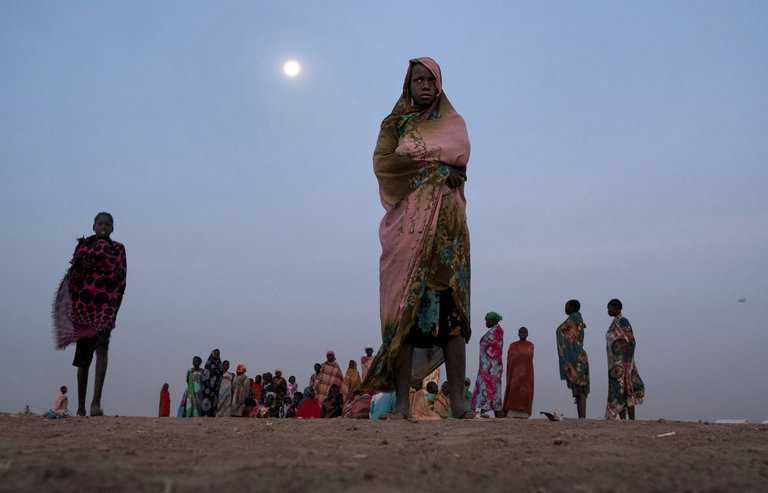
The relentless civil war in Syria and a surge of South Sudanese fleeing the collapse of peace efforts in their country helped propel the global population of displaced people to a postwar record in 2016, the United Nations refugee agency said Monday.
The agency’s annual Global Trends report, a statistical assessment of refugees, asylum seekers and people forcibly displaced from their homes, reflected a worsening of conflict, mayhem and persecution.
The new total of 65.6 million people displaced from their homes is 300,000 higher than the 2015 number, which had been the highest since World War II and its aftermath.
“By any measure this is an unacceptable number, and it speaks louder than ever to the need for solidarity and common purpose in preventing and resolving crises, and ensuring together that the world’s refugees, internally displaced and asylum seekers are properly protected and cared for while solutions are pursued,” Filippo Grandi, the United Nations high commissioner for refugees, said in releasing the findings.
The relentless civil war in Syria and a surge of South Sudanese fleeing the collapse of peace efforts in their country helped propel the global population of displaced people to a postwar record in 2016, the United Nations refugee agency said Monday.
The agency’s annual Global Trends report, a statistical assessment of refugees, asylum seekers and people forcibly displaced from their homes, reflected a worsening of conflict, mayhem and persecution.
The new total of 65.6 million people displaced from their homes is 300,000 higher than the 2015 number, which had been the highest since World War II and its aftermath.
“By any measure this is an unacceptable number, and it speaks louder than ever to the need for solidarity and common purpose in preventing and resolving crises, and ensuring together that the world’s refugees, internally displaced and asylum seekers are properly protected and cared for while solutions are pursued,” Filippo Grandi, the United Nations high commissioner for refugees, said in releasing the findings.
The new report was issued at a time when governments in Europe and the United States have become increasingly resistant to accepting more refugees and asylum seekers as xenophobic political trends have helped feed hostility and mistrust.
The Trump administration has vowed to restrict refugees and toughen immigration through “extreme vetting” and a proposed suspension of visas for people from six predominantly Muslim nations. Anti-immigrant sentiment in Europe has roiled the politics in Britain, Hungary, the Netherlands, France, Italy and Germany, among others.
The 2016 report showed that the number of refugees worldwide reached 22.5 million, the most ever. More people fled the conflict in Syria — 5.5 million — than any other country, but the biggest new source of refugees was what the report called “the disastrous breakdown of peace efforts” in South Sudan. Nearly 750,000 people fled that fledgling country last year.
Newsletter Sign Up
Thank you for subscribing.
An error has occurred. Please try again later.
You are already subscribed to this email.
View all New York Times newsletters.
- See Sample
- Manage Email Preferences
- Not you?
- Privacy Policy
- Opt out or contact us anytime
Among the refugees, asylum seekers — people who have fled their country and are seeking international protection — totaled 2.8 million by the end of 2016.
There were 40.3 million people displaced inside their own countries at the end of 2016, slightly fewer than the 40.8 million at the end of 2015. The report attributed that slight reduction in part to people who had returned to their homes, offsetting the number of new people who had fled. Still, the report said, many returnees “did so in less than ideal circumstances and facing uncertain prospects.”
Of the 65.6 million displaced people in the world, 10.3 million had become displaced in 2016. “This equates to one person becoming displaced every three seconds,” the report said, “less than the time it takes to read this sentence.”
About two-thirds of the newly displaced people fled somewhere else in their own country. The report showed that 84 percent of all refugees who crossed borders went to low- or middle-income countries at the end of 2016, and that roughly one in three was hosted in the poorest countries, which can least afford the burden.
By population, the report said Syria still accounts for the biggest number of displaced people at 12 million, followed by Colombia with 7.7 million, Afghanistan with 4.7 million, Iraq with 4.2 million and South Sudan at 3.3 million.
Those rankings do not include the longstanding Palestinian population of roughly 5.3 million, but that figure is included in the total.
Correction: June 20, 2017
An article on Monday about United Nations estimates of the total number of people forcibly displaced from their homes around the world referred incorrectly to the record set in 2016. The figure of 65.6 million was the highest since World War II, not the highest in all of history.
We’re interested in your feedback on this page. Tell us what you think.



























